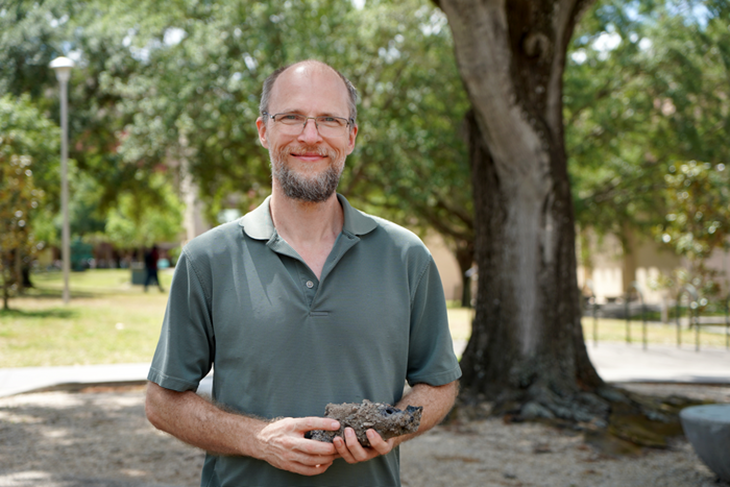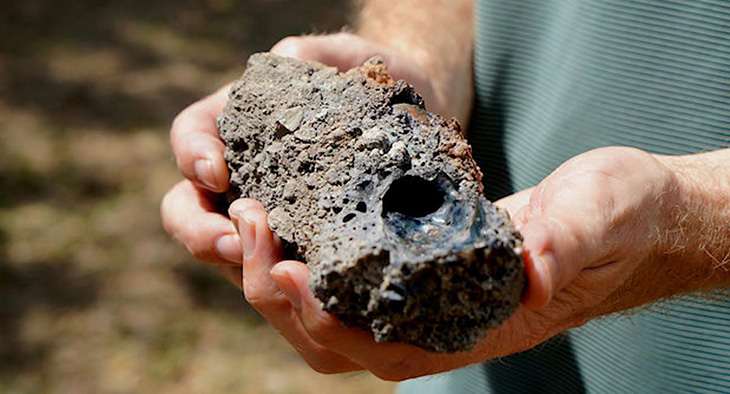
Much has yet to be discovered about our very own planet and scientists are constantly in search of new findings.
For this case, a lightning strike has produced a brand new phosphorus mineral, very much like those found on meteorites and in space.
The bolt that struck the rock had managed to create a chemical reaction that has never been seen before. This managed to give make a member of a new mineral group, a mixture of something between space minerals and minerals that are found in our home planet.
In fact, this may be why researchers believe lightning strikes like these could have produced chemicals that kick-started life on this planet. The find that they made after a strike on a tree in New Port Richey, Florida. The fulgurite produced was then sold by the landowners to a geoscientist who had it analyzed to see what it was made of.
Fulgurites are formed when there is high-energy electrical discharge of lightning going through rock, soil, and sand. The strike melts these components and produces a fossil out of a lightning strike. Fulgurites were studied in test tubes and in the desert landscapes of the Sahara. The experts did this so that they can try and map out the weather patterns of a pre-desertified North Africa.
“When lightning strikes a tree, the ground typically explodes out and the surrounding grass dies, forming a scar and sending electric discharge through nearby rock, soil, and sand, forming fulgurites,” said Professor Matthew Pasek. He is from the University of South Florida.
“Minerals similar to it can be found in meteorites and space, but we’ve never seen this exact material anywhere,” he also said.
The study that talked about the discovery was published in the journal Communications Earth & Environment. This happened after Professor Pasek teamed up with Luca Bindi, a professor of mineralogy and crystallography at the University of Florence in Italy.
They worked together and gathered a team as they set out to investigate unusual minerals that had the element phosphorus, especially those that were formed by lightning strikes so that they can understand deeper this high-energy phenomena.
They looked inside the fulgurite, which formed when lightning not melted the iron and the carbon in the roots of the tree. They saw that there was a colorful, crystal-like matter inside, a material that has never been discovered or seen before this.
Co-principal investigator Dr. Tian Feng, a graduate of USF’s geology program, also went out to remake the material in a lab. However, he wasn’t successful at it.

What this means is that the new material most likely forms only under fast and precise conditions. If the substance is placed under the heat for too long, it will turn into the mineral that’s found in meteorites.
“Previous researchers indicate that lightning reduction of phosphate to have been a widespread phenomenon on the early Earth,” said Dr. Feng.
“However, there is an environmental phosphite reservoir issue in Earth that these solid phosphite materials are hard to restore.”
Dr. Feng said this research may also shed to light other forms of reduced minerals, how these are possible and how several of them may have been crucial when life on Earth was still developing.
Professors Pasek and Bindi plan to further look into the material produced in order for them to see if it could be officially declared a mineral and bring additional awareness to the scientific community about this kind of phenomenon.
What are your thoughts? Please comment below and share this news!
True Activist / Report a typo


